Download the whitepaper for free!
The advent of Artificial Intelligence (AI) has ushered in a new era of efficiency and effectiveness in various industries, with the legal field being no exception. As the complexity of legal cases increases alongside the exponential growth of data, AI appears as a beacon of hope for streamlining operations, cutting costs, and enhancing the accuracy and quality of legal work. However, the integration of AI in legal contexts is not devoid of challenges. In our whitepaper, “What you need to consider when using AI for contract analysis and research work,” we dive into these very issues, providing legal professionals with a digestible guide to the latest AI technologies apt for legal applications.
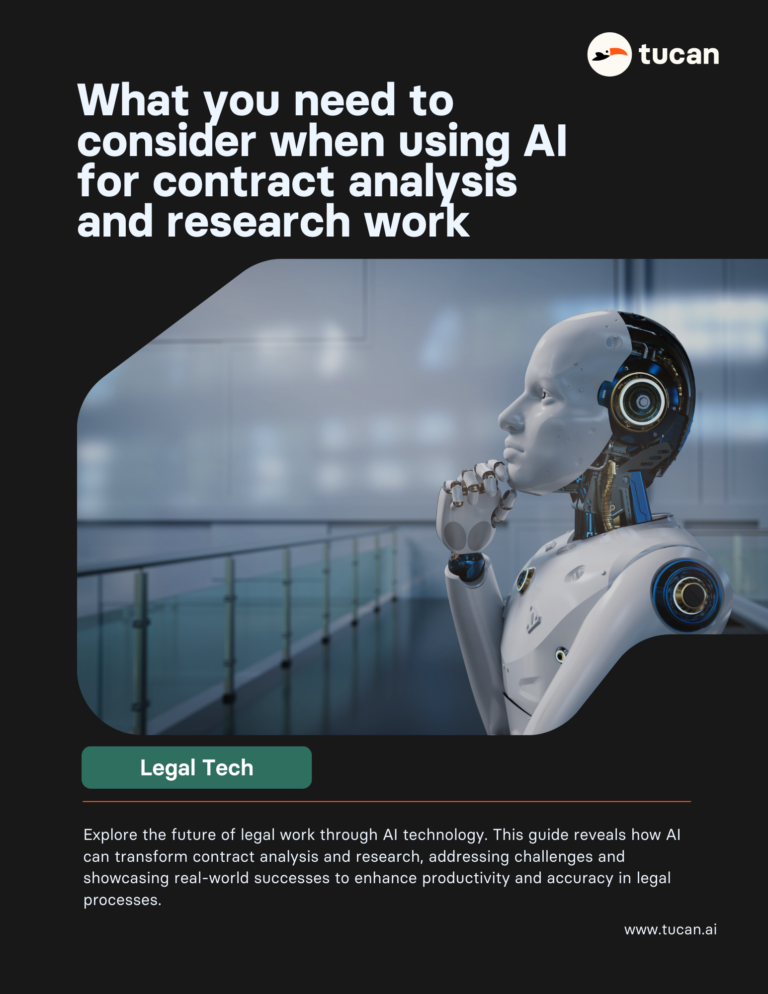
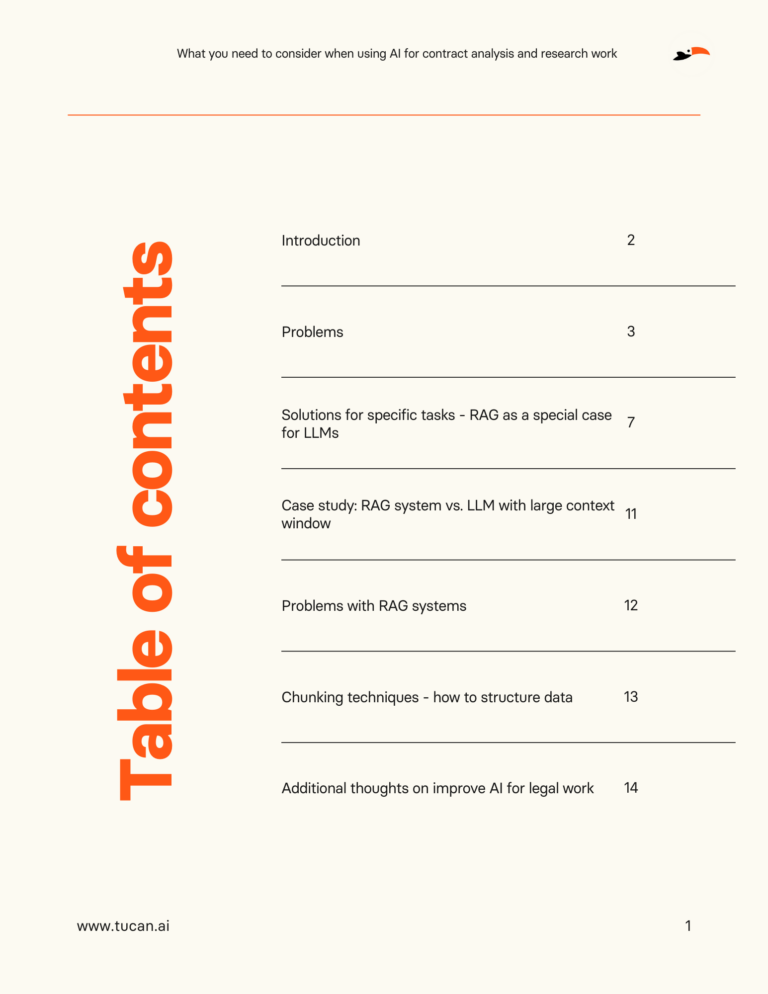

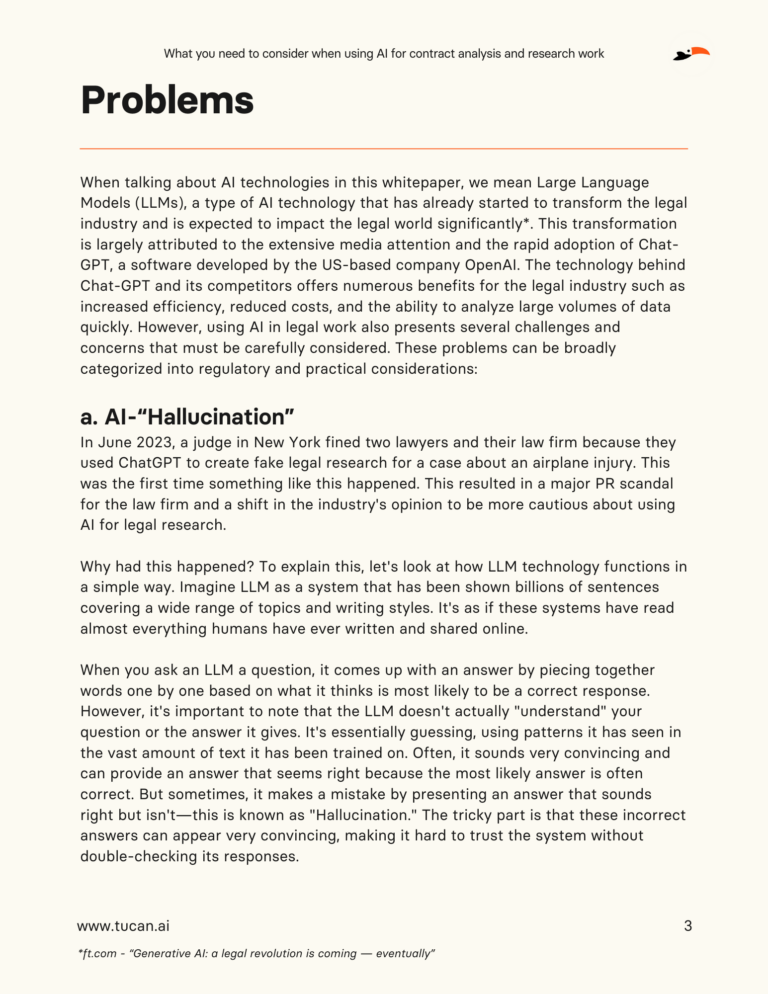
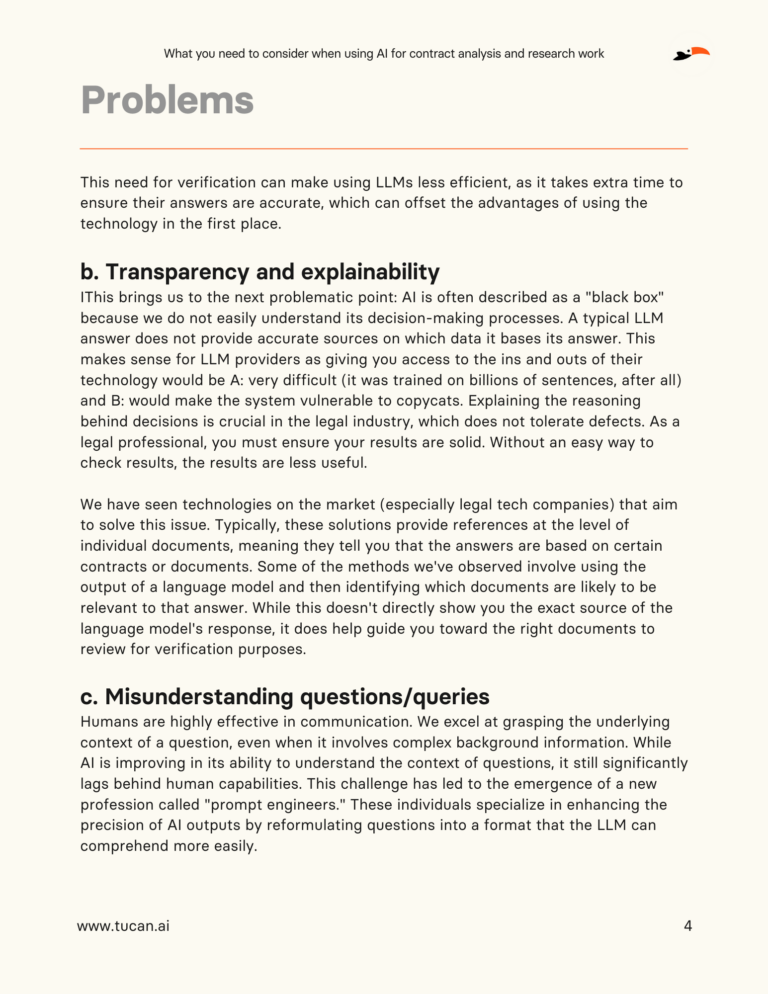
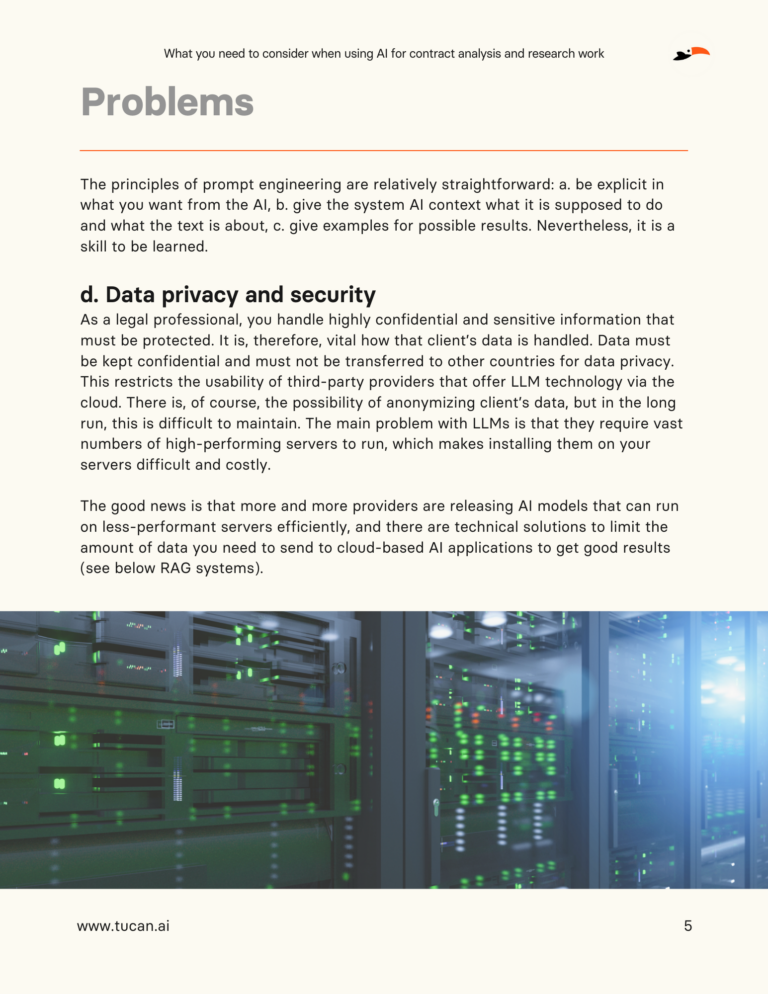
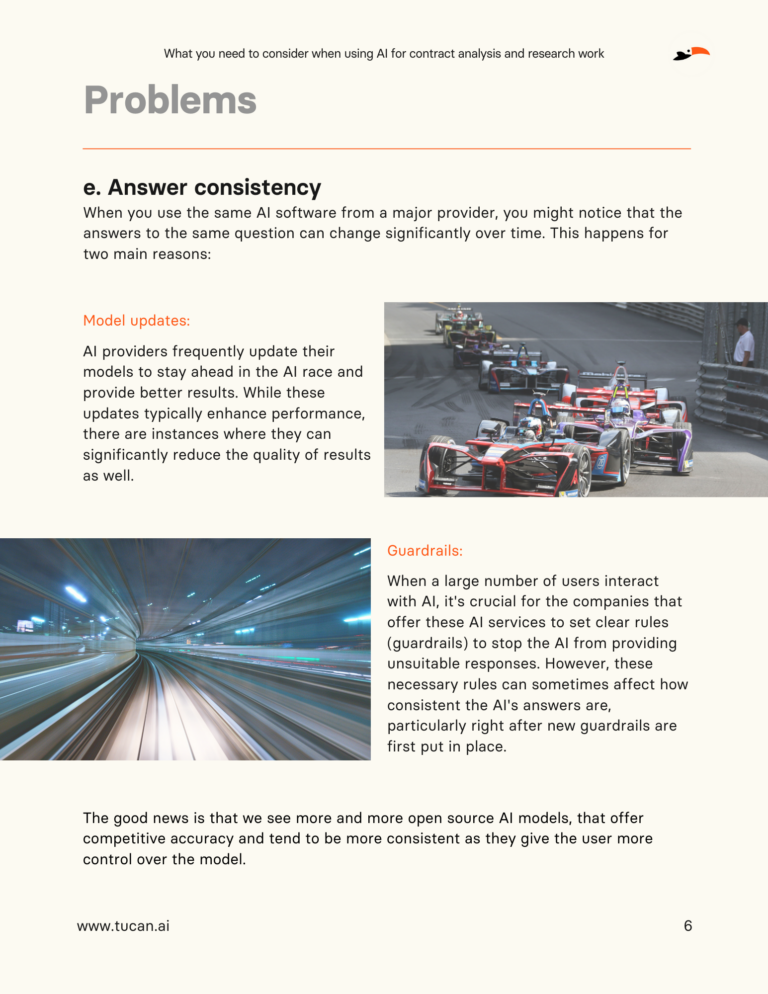
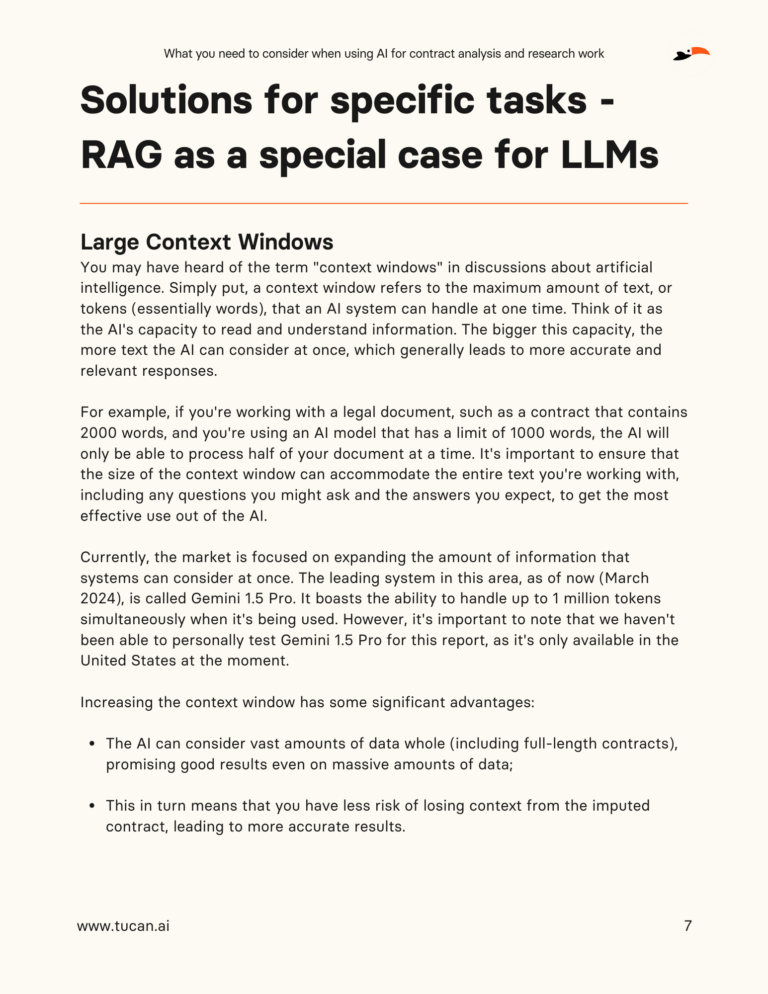
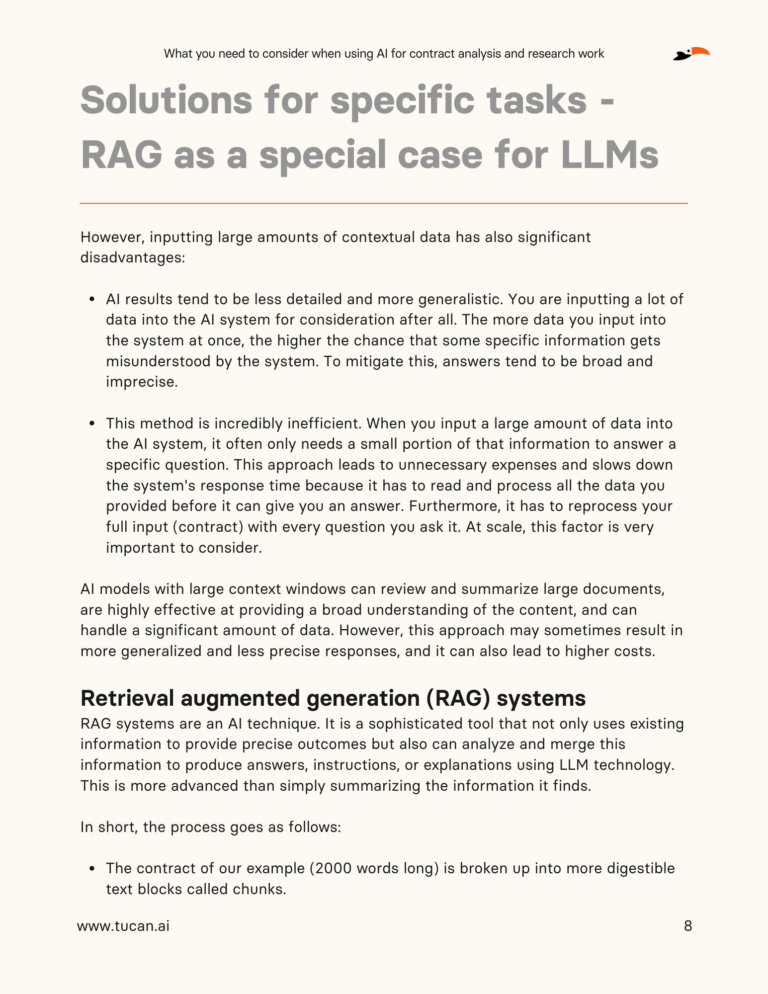
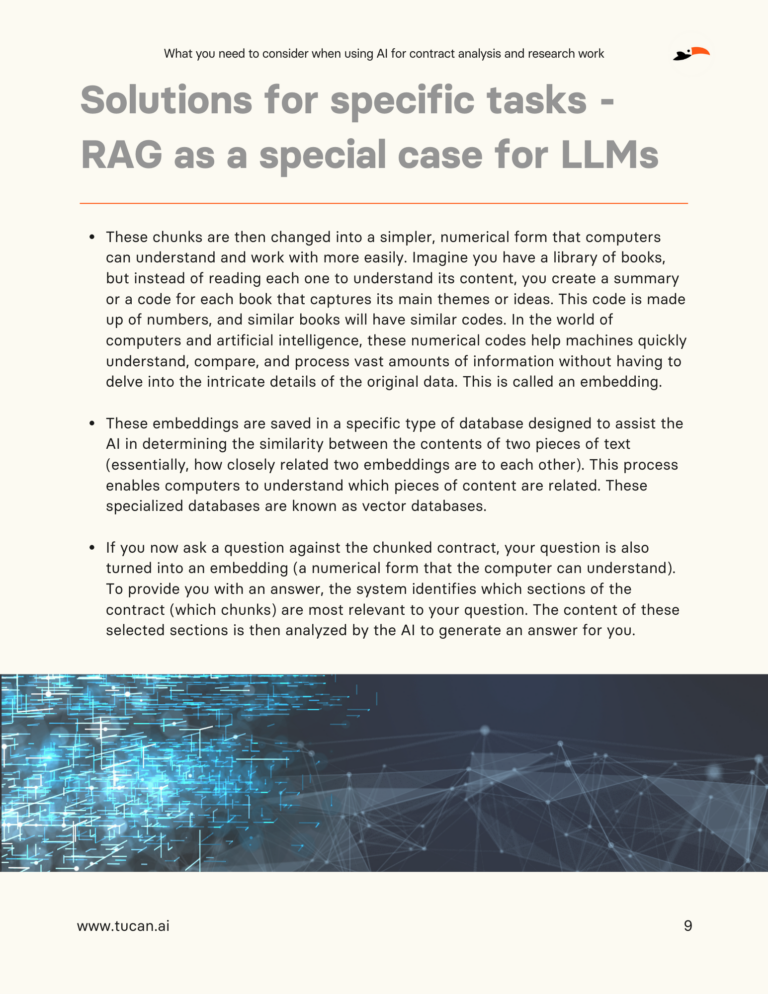
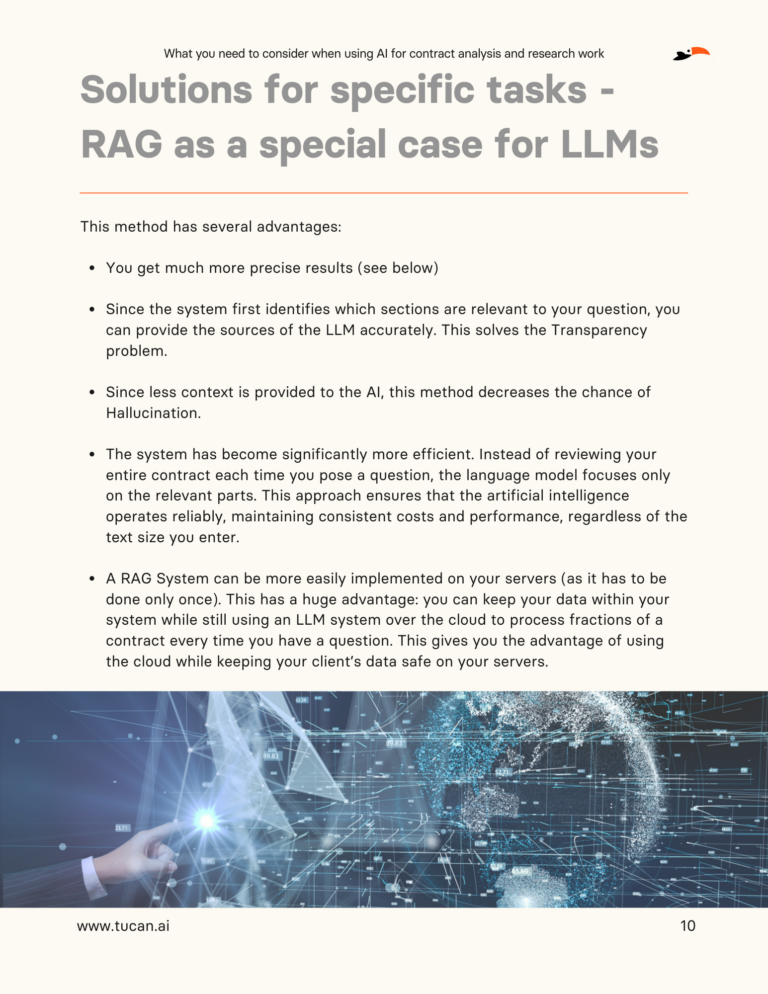
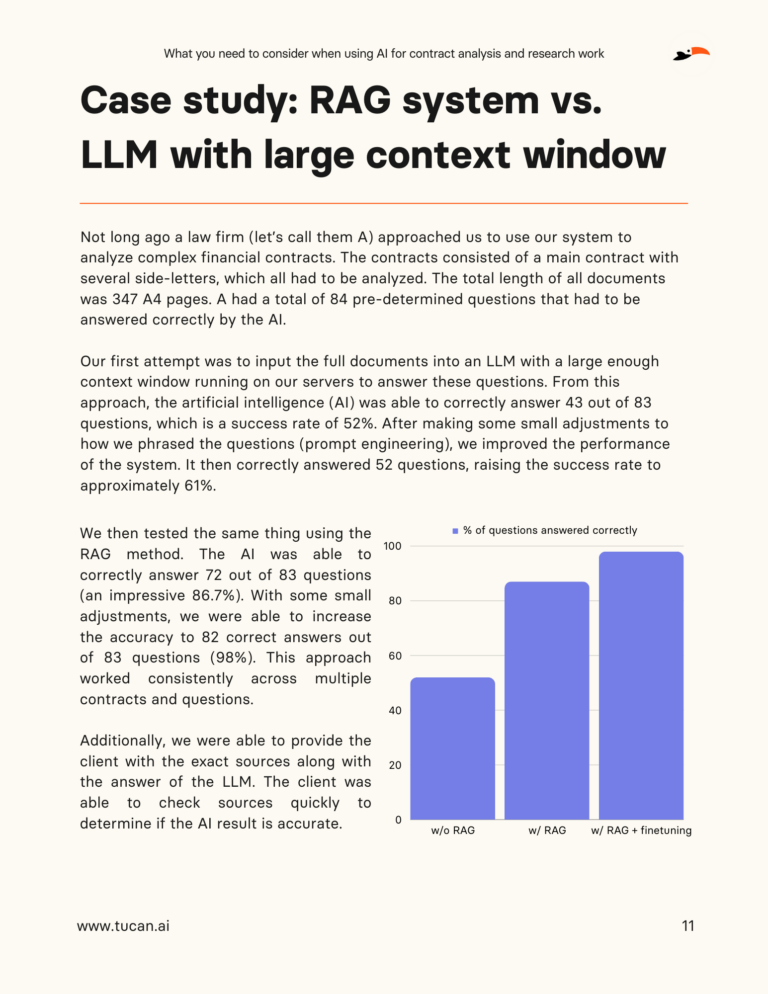
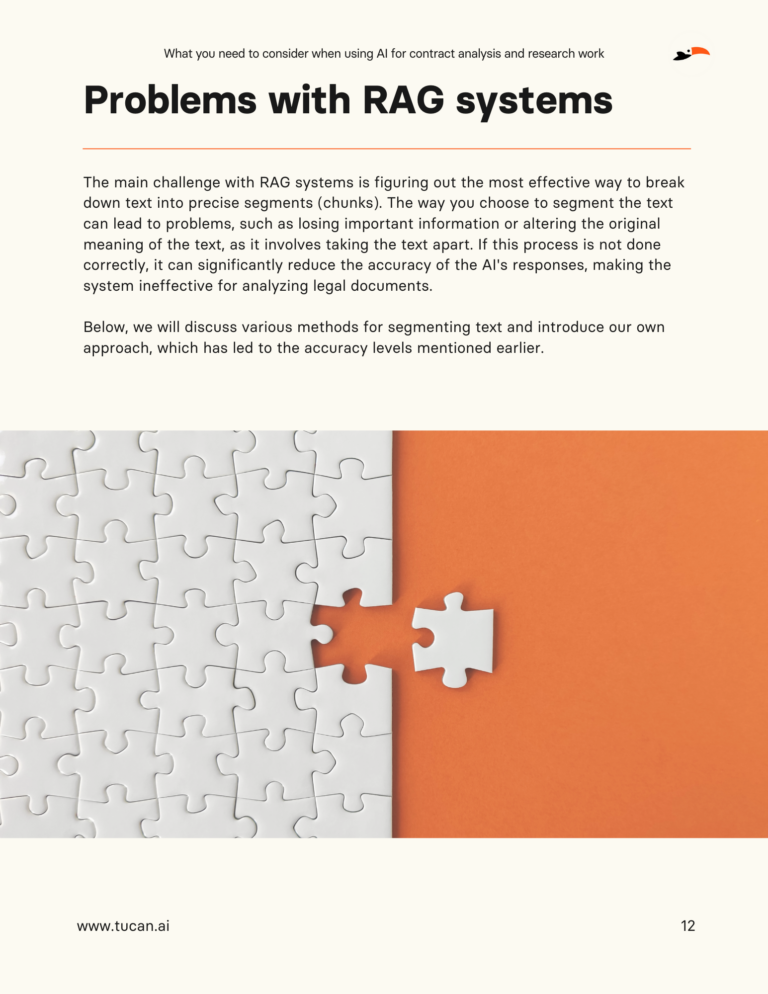
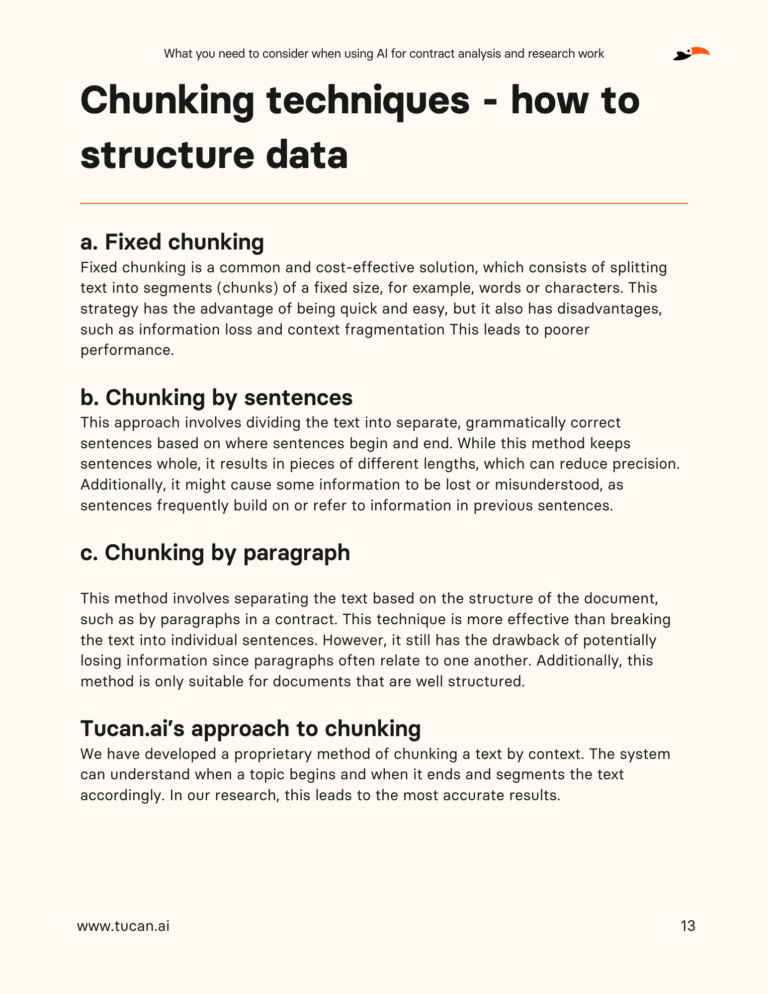
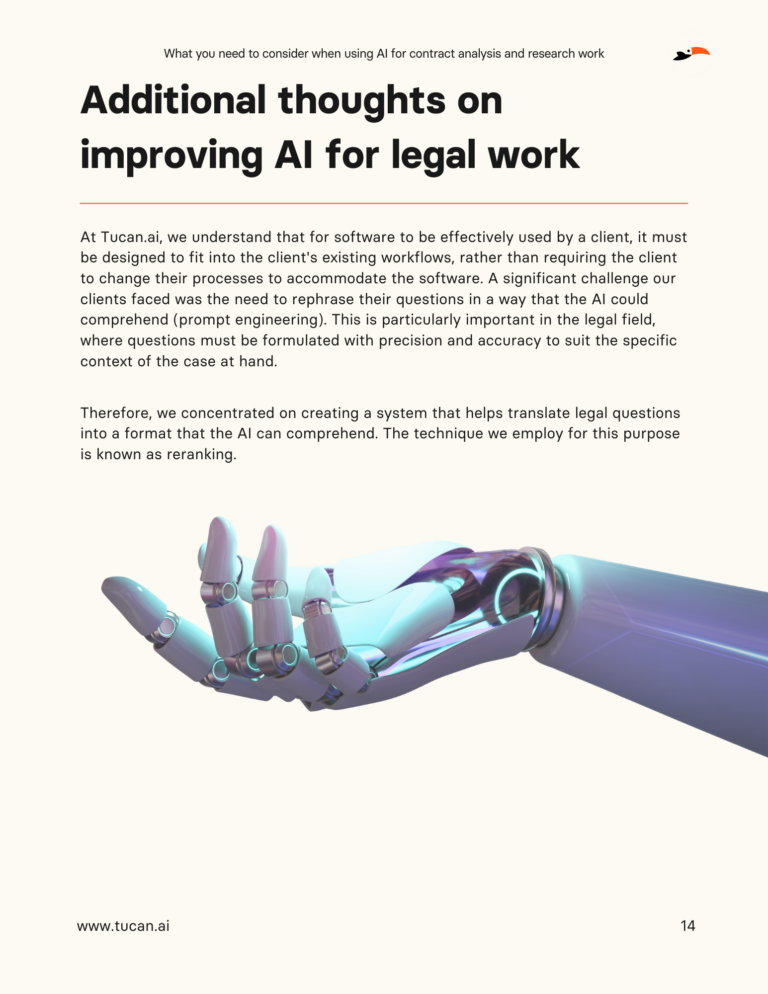
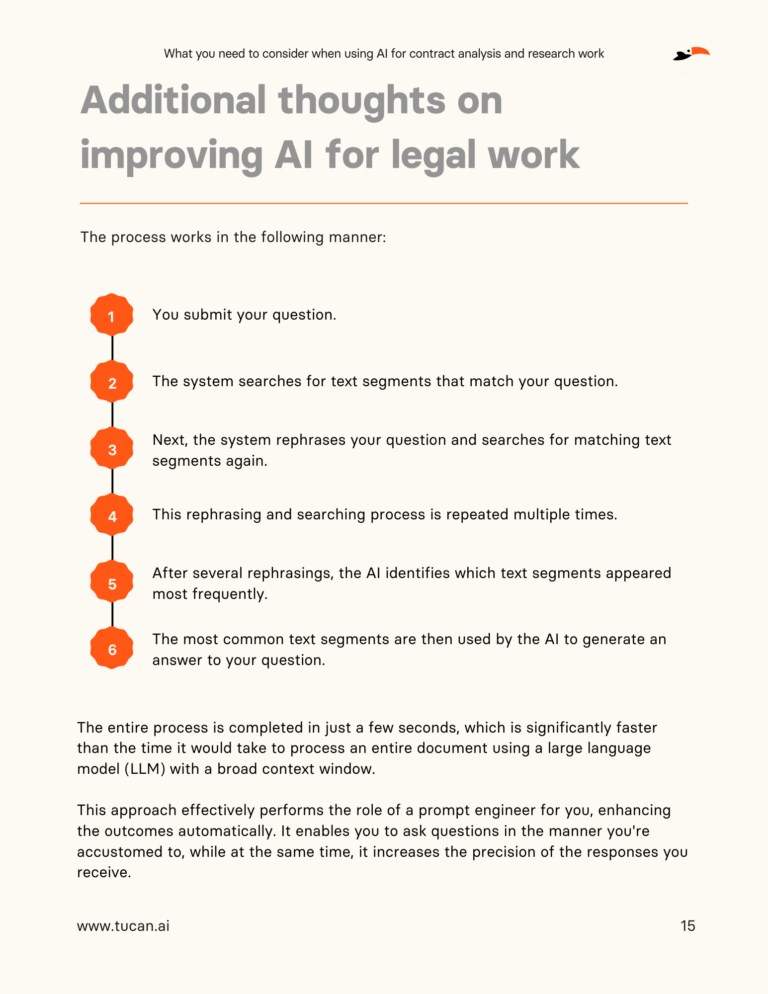
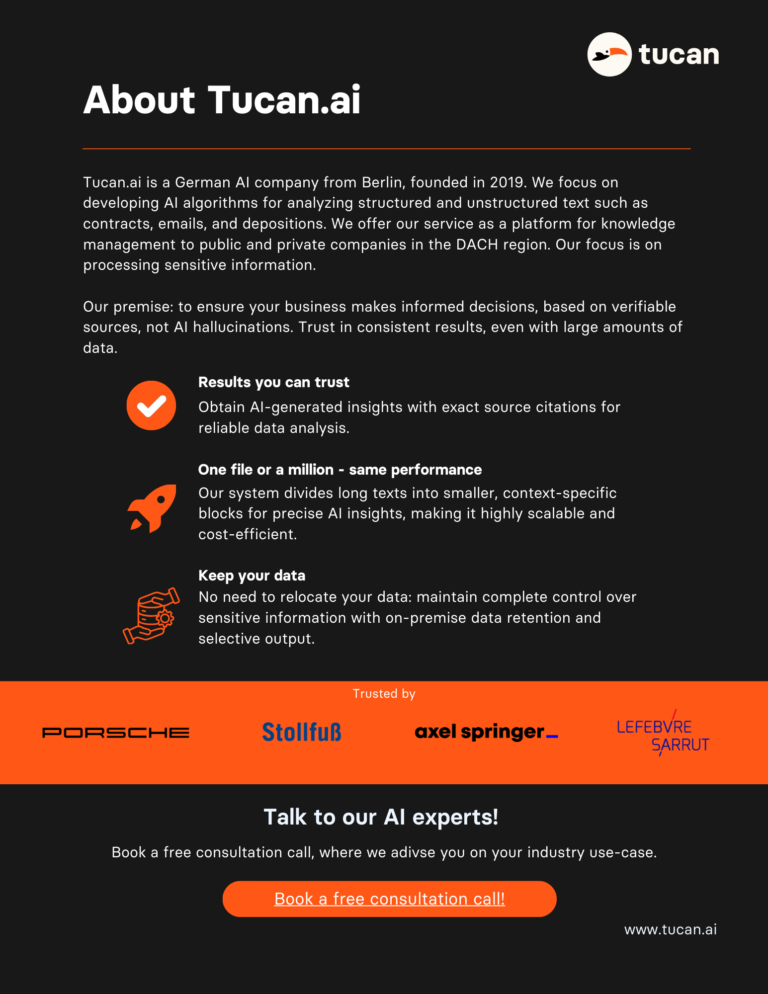
Table of Contents
ToggleCore Challenges in AI Adoption for the Legal Industry
In the legal industry, the adoption of AI, particularly Large Language Models (LLMs), while transformative, faces significant challenges that hinder its seamless integration. The problem of “hallucinations,” where AI produces convincing yet inaccurate answers, has led to serious repercussions, such as fines imposed on lawyers for utilizing ChatGPT for fictitious legal research. Moreover, the opaque nature of AI’s decision-making, termed the “black box” issue, clashes with the legal sector’s demand for transparency and reliability. Additionally, AI’s struggle to comprehend complex human queries and the dependency on prompt engineering underscore its limitations in contextual understanding. The industry’s stringent requirements for data privacy and security further complicate the utilization of cloud-based AI solutions. Finally, the evolving nature of AI models introduces issues of reliability and consistency, as responses to identical queries may vary over time. Together, these challenges underscore the critical need for a cautious and informed approach to leveraging AI in legal practices.
Download the whitepaper for free!
Innovations and Solutions
In the quest for advancing AI’s application in the legal sector, notable innovations and solutions are emerging. The introduction of Retrieval Augmented Generation (RAG) systems marks a pivotal advancement, offering a method to deliver precise and accurate answers by breaking down extensive texts into manageable segments. This not only bolsters the accuracy of results but also addresses data privacy concerns by facilitating AI’s operation on private servers. Furthermore, the development of novel chunking techniques, which segments texts based on context rather than fixed parameters, significantly enhances AI’s capability in analyzing legal documents. Additionally, the automation of prompt engineering represents a breakthrough solution to the challenges of input precision. By developing systems that automatically translate regular legal queries into AI-comprehensible formats, there’s a marked improvement in preserving the original intent of questions and enhancing the precision of outcomes. Together, these innovations promise a more effective and secure integration of AI in the legal industry, opening new avenues for its application.
In navigating the complex landscape of AI in the legal industry, understanding its benefits and pitfalls is paramount. Tucan’s whitepaper serves as an essential compendium for legal professionals seeking to integrate AI into their practice thoughtfully and successfully.
Download the whitepaper for free!